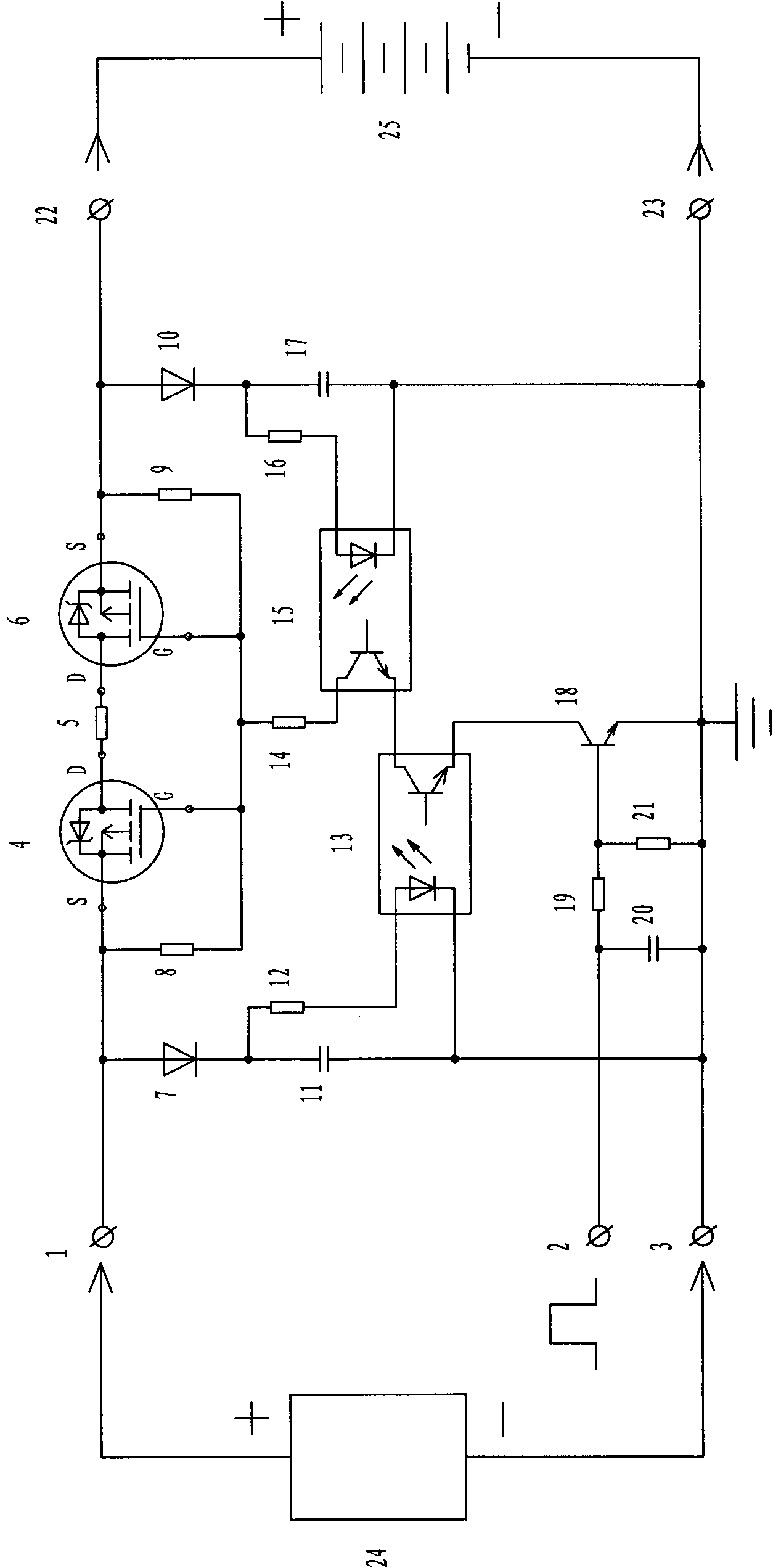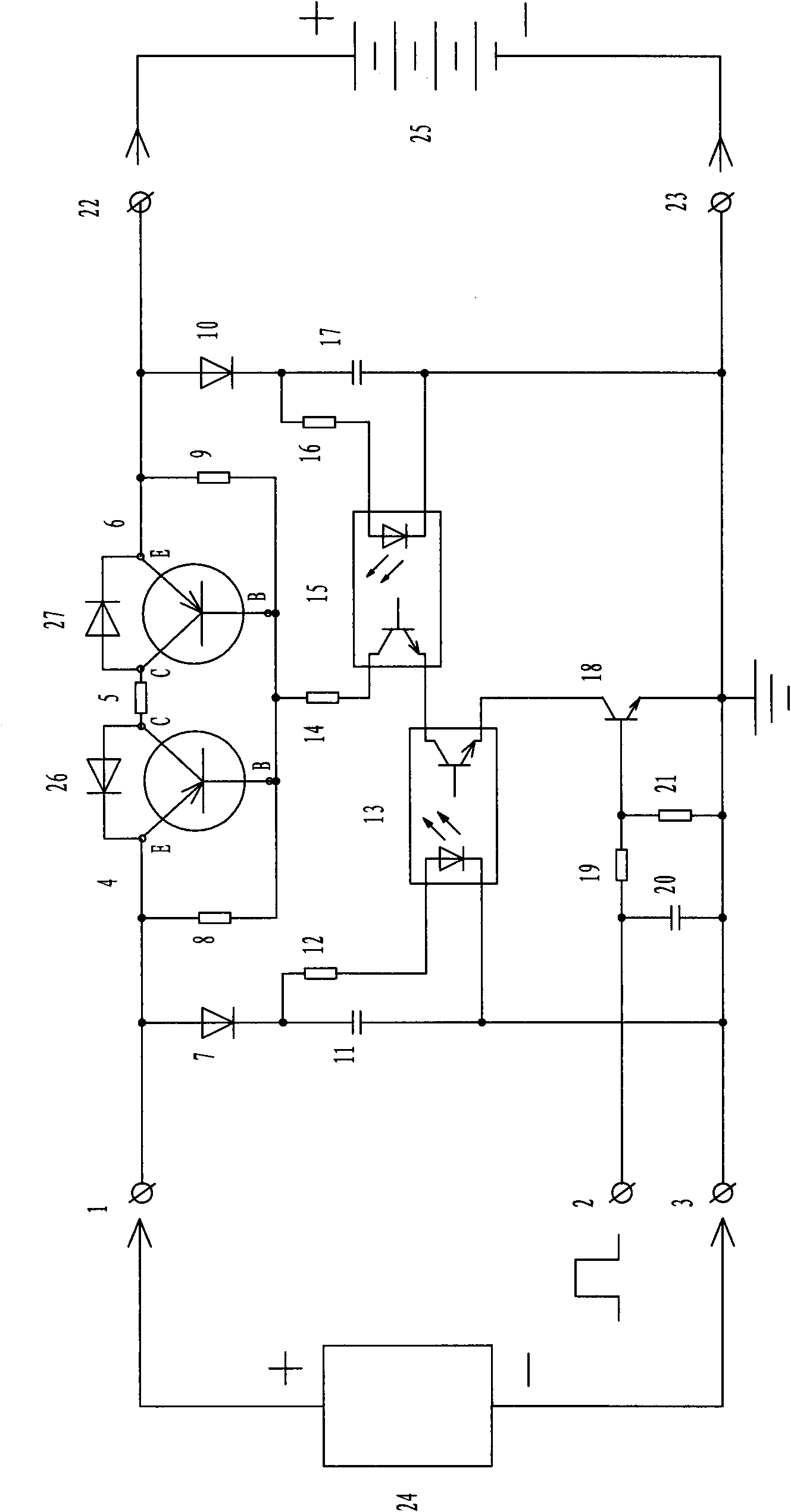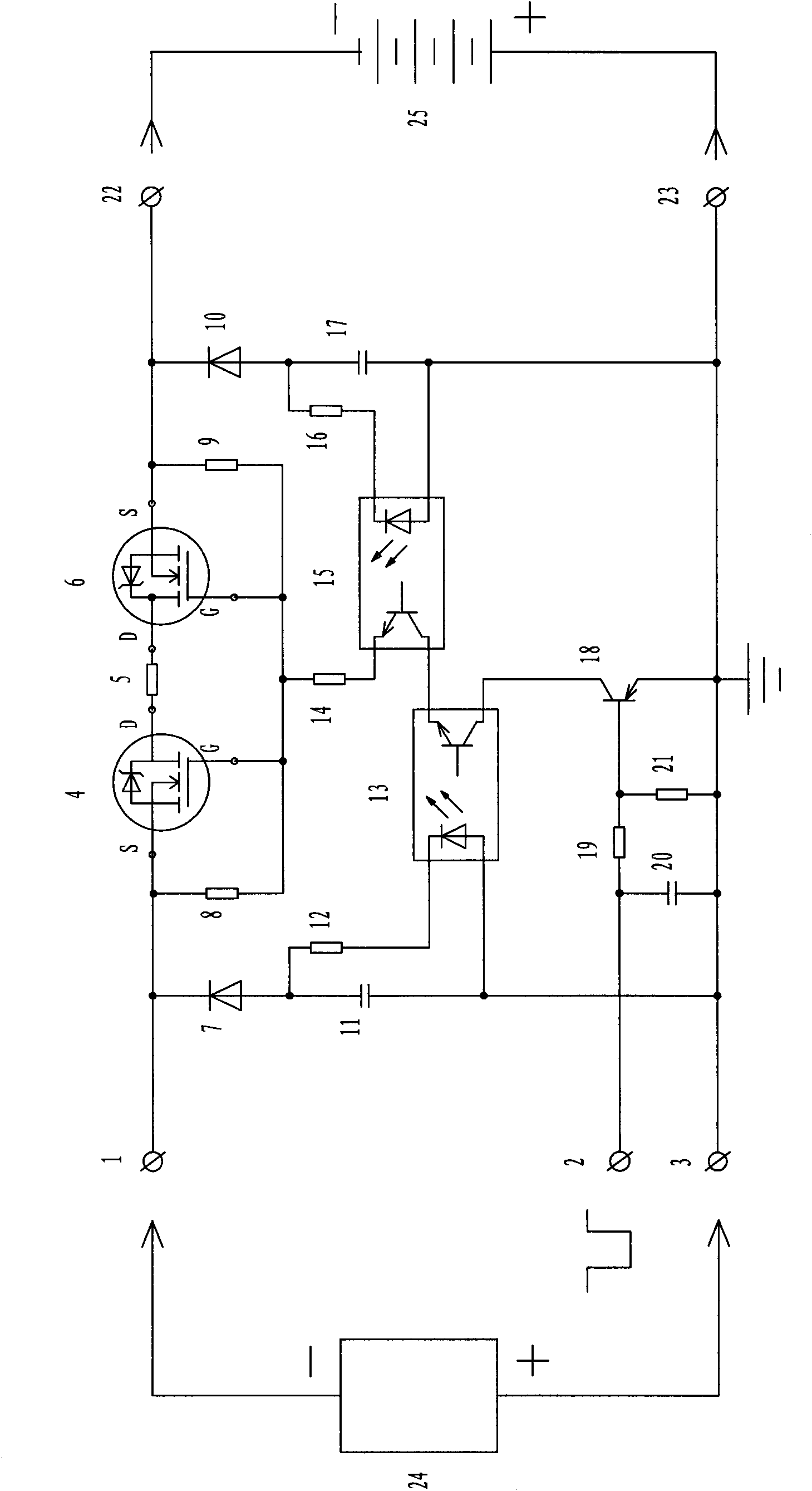Storage battery charge control circuit adopting two-way reverse connecting protection
A charging control and reverse connection protection technology, applied in battery circuit devices, emergency protection circuit devices, circuit devices, etc., can solve the problems of limited number of contacts, manual replacement, large conduction resistance, etc., to improve work performance and reliability, reduce accidental loss, and improve reliability
- Summary
- Abstract
- Description
- Claims
- Application Information
AI Technical Summary
Problems solved by technology
Method used
Image
Examples
Embodiment 1
[0032] Embodiment one, as attached figure 1 Shown: a battery charging control circuit using bidirectional reverse connection protection, which is composed of terminal 1, input terminal 2, terminal 3, P-channel field effect transistor 4, resistor 5, P-channel field effect transistor 6, diode 7, and resistor 8 , resistor 9, diode 10, capacitor 11, resistor 12, photocoupler 13, resistor 14, photocoupler 15, resistor 16, capacitor 17, NPN transistor 18, resistor 19, capacitor 20, resistor 21, terminal 22, terminal 23 compositions.
[0033] Terminal 1 is respectively connected with the anode of diode 7, the source (S) of P channel field effect transistor 4, and resistor 8, and the other end of resistor 8 is respectively connected with the grid (G) of P channel field effect transistor 4, resistor 14, P channel The grid (G) of the Doff 6 is connected to the resistor 9, and the other end of the resistance 9 is connected to the source (S) of the P-channel FET 6, the positive pole of t...
Embodiment 2
[0034] Embodiment two, as attached figure 2 Shown: a battery charging control circuit using bidirectional reverse connection protection, which is composed of terminal 1, input terminal 2, terminal 3, PNP transistor 4, resistor 5, PNP transistor 6, diode 7, resistor 8, resistor 9, diode 10 , capacitor 11, resistor 12, photocoupler 13, resistor 14, photocoupler 15, resistor 16, capacitor 17, NPN transistor 18, resistor 19, capacitor 20, resistor 21, terminal 22, terminal 23, diode 26, diode 27 compositions.
[0035] Terminal 1 is respectively connected with the emitter (E) of diode 7 anodes, PNP transistor 4, resistor 8, diode 26 cathodes, and the other end of resistor 8 is connected with the base (B) of PNP transistor 4, resistor 14, PNP transistor 6 respectively. The base (B) is connected to the resistor 9, and the other end of the resistor 9 is connected to the emitter (E) of the PNP transistor 6, the negative pole of the diode 27, the positive pole of the diode 10, and the...
Embodiment 3
[0036] Embodiment three, as attached image 3 Shown: a battery charging control circuit using bidirectional reverse connection protection, which is composed of terminal 1, input terminal 2, terminal 3, N-channel field effect transistor 4, resistor 5, N-channel field effect transistor 6, diode 7, and resistor 8 , resistor 9, diode 10, capacitor 11, resistor 12, photocoupler 13, resistor 14, photocoupler 15, resistor 16, capacitor 17, PNP transistor 18, resistor 19, capacitor 20, resistor 21, terminal 22, terminal 23 compositions.
[0037] Terminal 1 is respectively connected with the cathode of diode 7, the source (S) of N-channel field effect transistor 4, and resistor 8, and the other end of resistor 8 is respectively connected with the grid (G) of N-channel field effect transistor 4, resistor 14, and N-channel field effect transistor 4. The grid (G) of the Doffet 6 is connected to the resistor 9, and the other end of the resistor 9 is connected to the source (S) of the N-ch...
PUM
 Login to View More
Login to View More Abstract
Description
Claims
Application Information
 Login to View More
Login to View More - Generate Ideas
- Intellectual Property
- Life Sciences
- Materials
- Tech Scout
- Unparalleled Data Quality
- Higher Quality Content
- 60% Fewer Hallucinations
Browse by: Latest US Patents, China's latest patents, Technical Efficacy Thesaurus, Application Domain, Technology Topic, Popular Technical Reports.
© 2025 PatSnap. All rights reserved.Legal|Privacy policy|Modern Slavery Act Transparency Statement|Sitemap|About US| Contact US: help@patsnap.com



